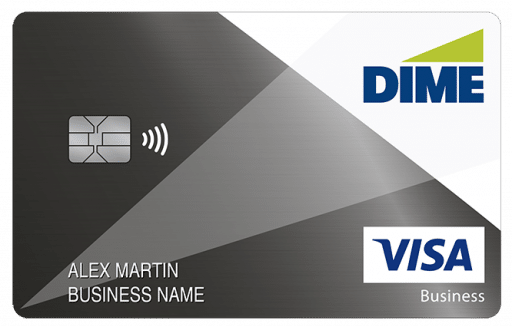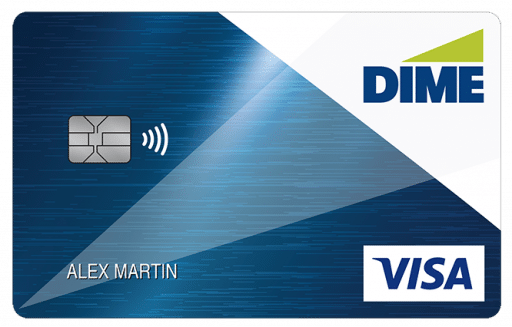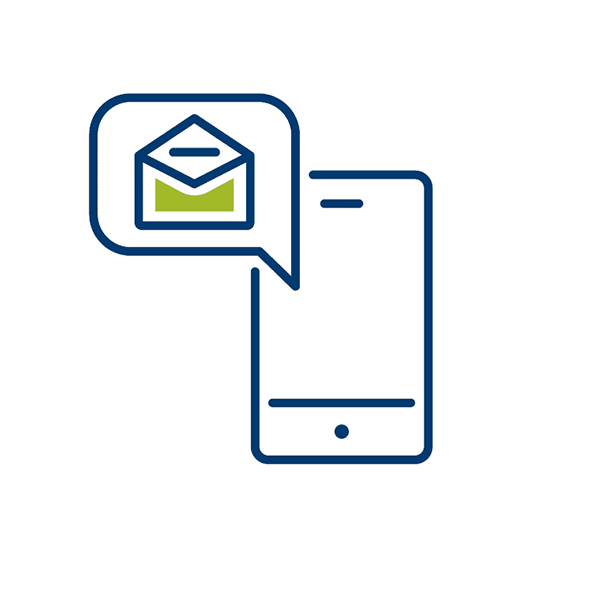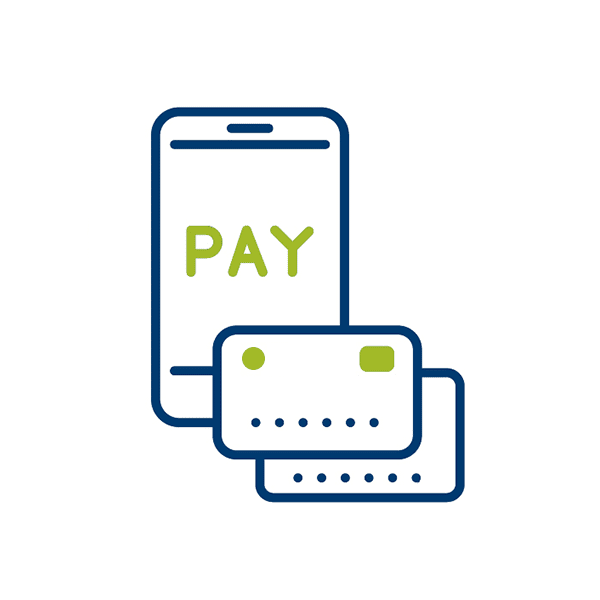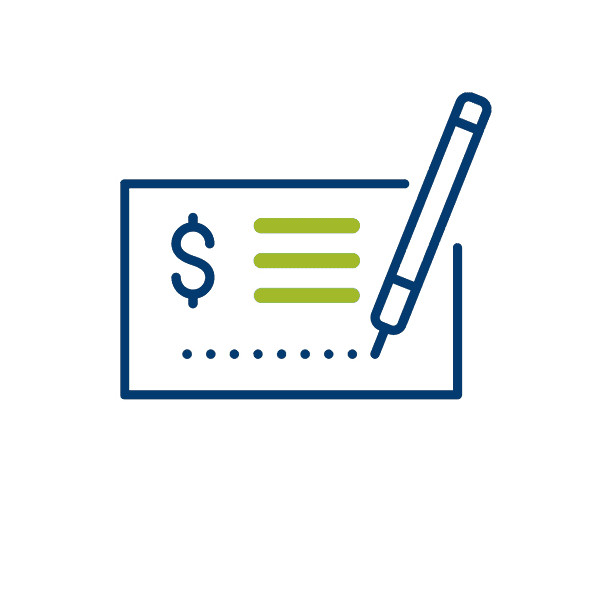
Security
Dime Community Bank is committed to your security.
Here at Dime, your security is our number one priority. To protect yourself and your finances, we’ve listed common scams and red flags you must watch out for.
Zelle Scams are on the rise.
Watch out for these common scams and learn what you can do if you’ve been targeted.
The Fake Fraud Department Call
A call can appear genuine with caller ID displaying a legitimate contact name and number from your financial institution. Fraudsters know this and can take advantage of unsuspecting victims in a variety of ways. They might call, posing as your bank’s fraud prevention, asking about a pending transaction. They’ll say you must use the Zelle app to reverse unauthorized transactions and stop the charges. Remember, a financial institution will never ask you to reverse a charge on your account through Zelle.
How To Protect Yourself:
Never provide personal information or follow the instructions of someone who calls you. Instead, call your bank directly so that you know for sure who you’re talking to.
“Pay Yourself” Scams
A “Pay Yourself” scam begins with a fraudulent bank alert via text message about unusual activity. If you respond to the text, you will receive a call from what appears to be your bank. They’ll pose as a bank representative and suggest preventing fraud by asking you to send money via Zelle. They will then ask you for your phone number, along with the one-time code that gets sent to your phone. If you give them this code, they will use it to add their bank account to your Zelle. Once this happens, the money you send will go straight to the scammers bank account.
How To Protect Yourself
A bank or financial institution will never ask you to send money with Zelle. If someone exhibits this behavior, it’s likely a scam; hang up the phone immediately.
The Job Offer Scam
Beware of fake hiring managers offering jobs and sending a check for work-related expenses. After depositing the check, you’ll be requested to transfer the funds to a Zelle account for equipment payment. The check will undoubtedly bounce, and you’ll lose any money you send.
How To Protect Yourself:
No matter how good it sounds, a job that requires you to pay anything from your account is probably fake. Even if they send a check to cover it, be cautious, as it may still be a scam. Best to move on to another opportunity. You can also research the job and employer. If the job is on a third-party site but not listed on the company site, it probably doesn’t exist.
Pretend Text or Email From Your Bank
A scam could begin with a text on your phone from your “bank.” The message seeks to verify a specific transaction and requests a response of either “yes” or “no”. The scammer pretends to be your bank representative, tricks you into sharing personal and financial information, and transfers your funds.
How To Protect Yourself
Experts advise against clicking on links in text messages or emails. Additionally, they recommend refraining from sharing personal and financial information through any communication you receive. If this happens, contact your bank directly to confirm the legitimacy and check for any account compromises.
Additional Tips To Help You Stay Protected
- Don’t trust caller ID — it’s not always who it says it is.
- Don’t respond to unsolicited text messages or emails.
- Only send money to people you know.
- Watch out for “urgent” deadlines or requests from new recipients.
- Protect your devices by updating them with the latest security patches and software.
- Never give anyone your two-factor authentication passcode.
- Review your credit reports on a regular basis.
- Enable fraud alerts on all of your financial accounts.
- Control access to all your financial accounts, create strong passwords, and never share them with others.
If you’re a victim of fraud or have been scammed through Zelle
Business Email Compromise (BEC) Scams
Business Email Compromise (BEC) fraud is a type of cyber scam. It specifically targets businesses that frequently engage in wire transfers and ACH transfers. BEC fraud is known to be one of the most financially damaging online crimes.
How Criminals Carry Out BEC Scams
A scammer might:
- Spoof an email account or website. Slight variations on legitimate addresses ([email protected] vs. [email protected]) fool victims into thinking fake accounts are authentic.
- Send spearphishing emails. These messages look like they’re from a trusted sender to trick victims into revealing confidential information. The information enables criminals to access company accounts, calendars, and data necessary for executing BEC schemes (including CEO Fraud, Employee Account Compromise, Man-In-The-Email Scams, and Bogus Invoice Schemes).
- Use malware. Malicious software can infiltrate company networks and gain access to legitimate email threads about billing and invoices. That information is used to time requests or send messages, so accountants or financial officers don’t question payment requests. Malware also lets criminals gain undetected access to a victim’s data, including passwords and financial account information.
What to look for:
- Emails and phone calls to employees with requests for their account username and/or password
- An email address that has slight variations from the legitimate address (e.g., [email protected] instead of [email protected])
- Unusual supplier requests for wire transfers (e.g., bypassing payment procedures, communicating solely via email).
- Check and double-check the owner of the email address. You can identify the sender by clicking on the email address in the email header. For example, the sender may appear as [email protected], but when you click on the email, it shows as [email protected].
What you can do:
- Is your vendor or their point-of-contact new? If new, how did they learn about your business?
- If instructions are received by email or text, call the vendor directly on a known number and confirm the change.
- Did the vendor express urgency in request or provide only a specific window of availability for contact?
Educate yourself and your employees on this kind of scam, as no business is immune. Fraudsters consider themselves opportunists and will not hesitate to exploit a weakness when found.
How to Report:
If you or your business fall victim to a BEC scam, it’s important to act quickly:
- If you are a fraud victim, contact your financial institution immediately to request fund recall. Regardless of the amount lost, file a complaint with www.ic3.gov or, for BEC/EAC victims, BEC.ic3.gov, as soon as possible.
Phone Call Scams
These scammers may try to steal your money or personal information by pretending to be someone they’re not. Scams may come through phone calls from real people, robocalls, or text messages.
How Criminals Carry Out Phone Call Scams
A scammer might:
- Use neighbor spoofing to make incoming calls appear local or spoof numbers from trusted sources. If you respond, they employ scam scripts to steal your money or valuable personal information for fraudulent purposes.
- Callers often make false promises, such as opportunities to buy products, invest your money, or receive free product trials. They may also offer you money through free grants and lotteries. Some scammers may call with threats of jail or lawsuits if you don’t pay them immediately.
What to look for:
- A claim that you have been specially selected
- Use of high-pressure sales tactics and “limited-time” offers
- Reluctance to answer questions about the business or the offer
- Request that you “confirm your personal information”
- Request payment by means other than credit card –including cash, gift card, wire transfer or private courier
- Request your credit card or other payment mechanism for “shipping and handling”
- Use of threats if you don’t comply – even the threat of arrest
- The call starts with a prerecorded message – typically called a “robocall”
- Claims you have a virus on your computer or requests to log in to your computer
- They claim to be a friend or relative urgently needing money without allowing time for consultation or verification.
What you can do:
- Enroll for free in the federal do-not-call list at www.donotcall.gov. This can help limit the number of scam calls you receive.
- If you receive a Robocall, hang up the phone, block their number, then report the phone number to your provider.
How to Report:
If you or your business fall victim to a phone scam, it’s important to act quickly:
- If you are a fraud victim, contact your financial institution immediately to request fund recall. Regardless of the amount lost, Report the scam to the FTC online, or by phone at 1-877-382-4357 (9:00 AM – 8:00 PM, ET). The FTC accepts complaints about most scams, including phone call scams.
Text Message Scams
Scammers use fake text messages to deceive you into sharing personal information such as passwords, account numbers, or Social Security numbers. If they get that information, they could gain access to your bank account, email, or other important accounts. They may also sell your information to the highest bidder.
How Criminals Carry Out Text Message Scams
A scammer might:
- Try to get you to click on links in text messages by promising you something.
- Send fake messages that say they have information about your account or a transaction.
- Ask questions about your income, debts, or financial information (such as your bank account, credit card, or Social Security number) to proceed with claiming a gift or pursuing an offer.
- Also send you links which lead to fake websites. These websites mimic popular sites to trick you into entering login or credit card details.
What to look for:
- Promises of free prizes, gift cards, or coupons — but they’re not real
- Offers you a low or no interest credit card — but there’s no deal and probably no card
- Promises to help you pay off your student loans — but they won’t
- Say they’ve noticed some suspicious activity on your account — but they haven’t
- Claim there’s a problem with your payment information — but there isn’t
- They send a fake invoice and instruct you to contact them regarding unauthorized purchases, which is a scam.
- Send you a package delivery notification— but it’s fake
What you can do:
- Your phone may have an option to filter and block spam or messages from unknown senders. Learn to filter and block messages on an iPhone and how to block a phone number on an Android phone.
- Copy the message and forward it to 7726 (SPAM). This helps your wireless provider spot and block similar messages in the future.
- Report it to the FTC at ReportFraud.ftc.gov.
How to Report:
If you or your business fall victim to a text message scam, it’s important to act quickly:
- If you are a fraud victim, contact your financial institution immediately to request fund recall. Regardless of the amount lost, Report it to the FTC at ReportFraud.ftc.gov.
Payment App Scams
Some scammers may attempt to trick you into sending them money through a mobile payment app. That’s because they know once you do, it’s hard for you to get your money back.
How Criminals Carry Out Payment App Scams
A scammer might:
- Pretend to be a loved one who’s in trouble and ask you for money to deal with an emergency.
- Say you won a prize or a sweepstakes but need to pay some fees to collect it.
- Use malware. Malicious software can infiltrate company networks and gain access to legitimate email threads about billing and invoices. That information is then used to time requests or send messages, so accountants or financial officers don’t question payment requests. Malware also lets criminals gain undetected access to a victim’s data, including passwords and financial account information.
- Create fake websites and links to lure you to perform an online transaction.
- Pose as Dime or its partners to contact you to pay with a gift card.
- “Spoof” the Dime customer contact phone number to call you and pose as Dime. They will try to gain access to your login information, and ultimately your accounts.
What to look for:
- Fraudsters may contact you, claiming to represent a fraud department or merchant. They may ask you to confirm sensitive information, such as your bank account username and password, credit or debit card data, or Social Security numbers.
- Scammers posing as a legitimate business may request a P2P payment for a product or service. Once they receive your money, you never receive what you paid for, and they disappear.
- A scammer “accidentally” sends you money on a P2P service and asks you to send the money back. Never send back the money, and instead contact the P2P service about the error.
What you can do:
- Cash App recommends chatting through their app for the fastest service. To do so, open the app, go to your profile, and choose Support. You can also get help through cash.app/help or by calling 1 (800) 969-1940.
- Venmo also recommends chatting through their app for the fastest service. To do so, open the app, go to your profile, and choose Get Help. You can also email Venmo through their contact form or call them at 1 (855) 812-4430.
- For PayPal report it online through PayPal’s Resolution Center or call PayPal at 1 (888) 221-1161.
- For Zelle® Immediately report suspicious activity to Zelle® Support. If you authorized the payment, report a scam here.
How to Report:
If you or your business fall victim to a payment, it’s important to act quickly:
- If you are a fraud victim, contact your financial institution immediately to request fund recall. Regardless of the amount lost, contact Zelle, Cash App, Venmo, or PayPal from the links above.
Check Scams
In a check scam, a stranger will ask you to deposit a check from them, sometimes for several thousand dollars. They will tell you to send some of the money back or to another person. They always have a good story to explain why you can’t keep all the money. They may request you to cover taxes or fees for a prize, purchase supplies for a job, or refund overpaid money.
How Criminals Carry Out Check Scams
A scammer might:
- Pretend to hire you as a mystery shopper. They tell you to evaluate a retailer selling gift cards, money orders, or wire transfer services (e.g., Western Union, MoneyGram). You receive a check and are instructed to deposit it in your personal account, then wire a portion to another person. But once you do, the money is gone and the so-called “employer” will disappear, too.
- You apply online and think you’re getting hired as a personal assistant. You receive a check and are instructed to purchase gift cards, sending the PIN numbers to your “boss.” But the boss is a scammer, and once they get the gift card PINs, they will use them instantly. Leaving you without the money when the bank figures out the check was fake.
- Buy something from you online, “accidentally” and send you a check for too much. They will then ask you to refund the balance.
What to look for:
- Mystery Shopping: An “employer” will send you a check and tell you to use that money to purchase gift cards.
- Car Wrap decals: The company tells you to deposit a check and then send money to decal installers. But it’s a scam, the installers aren’t real, and now your money is gone.
- Claiming Prizes: A sweepstakes says you’ve won and gives you a check. They tell you to send them money to cover taxes, shipping and handling charges, or processing fees. But that’s not how legitimate sweepstakes work — and you’ll be out any money you send.
- Overpayments: People buying something from you “accidentally” send a check for too much, and ask you to refund the balance. But the check is a fake.
What you can do:
- Don’t rely on money from a check unless you know and trust the person you’re dealing with.
- If you wired money to a scammer, contact the wire transfer company promptly to report the fraud and file a complaint. Reach the complaint department of MoneyGram at 1-800-MONEYGRAM (1-800-666-3947) or Western Union at 1-800-325-6000. Ask for the money transfer to be reversed. It’s unlikely to happen, but it’s important to ask.
- If scammed with a money order, contact the issuer promptly to inquire about stopping payment. Also, try to stop delivery of the money order: if you sent it by U.S. mail, contact the U.S. Postal Inspection Service at 877-876-2455. Otherwise, contact whatever delivery service you used as soon as possible.
- If you paid with cryptocurrency, contact the company used to send the money and report the transaction as fraudulent. Ask to have the transaction reversed, if possible.
How to Report:
If you or your business fall victim to a check scam, it’s important to act quickly:
- If you think you’ve been targeted by a check scam, report it to the Federal Trade Commission, the U.S. Postal Inspection Service, or your state Attorney General.
Mail Theft
Tips to help keep your mail secure:
Mail theft-related check fraud generally pertains to the fraudulent negotiation of checks stolen from the U.S. Mail. The USPIS equipped high-risk area mailboxes with anti-fishing devices, preventing criminals from retrieving mail through collection-box slots. After stealing checks from the U.S. Mail, fraudsters and organized criminal groups may alter or “wash” the checks. The criminal would then replace the payee information with their identity, fraudulent identities, or business accounts that the criminals control. However, there’s still plenty that consumers can do to lower the risk of mail theft and financial loss.
- Deposit mail in collection boxes near pickup time or bring it inside the post office for mailing.
- If you choose to leave outgoing mail in your mailbox, don’t put up the flag.
- If possible, use digital forms of payment instead of writing out checks.
- Try not to leave incoming or outgoing mail sitting in your mailbox for an extended time, particularly overnight.
- Sign up for Informed Delivery. The USPS offers a free service to email you images of daily deliveries, ensuring you know what to expect and if anything is missing.
- Sign up for USPS Hold Mail online when you’re away or have a neighbor collect your mail.
- Keep an eye on your bank accounts for potential fraud, and report suspicious activity as soon as possible.
- When writing a check, fill out the line with the amount in words, such as “One hundred and twenty dollars and ten cents.” This makes it more difficult for someone to alter it without washing off the ink. Also make sure the numeric amount fills the box on the far-right side of the check.
If you think your mail has been stolen:
- Report suspected mail losses to USPIS at uspis.gov/report or call 877-876-2455 for crime investigations.
- Report the theft to local law enforcement so you’ll have a police report documenting the crime.
- For more tips on preventing mail and package theft, visit: https://www.uspis.gov/tips-prevention/mail-theft.
Dime’s Annual Security Message
To view Dime’s Annual Security Message, please click on the download button below.
Additional Resources
Keeping You Secure
- Online Security
- Passwords
- PC Security
- SSL Certificate & 128-bit Encryption
- Mobile Security
- Business Integrity Hotline
Helping You Avoid Fraud
- Reporting Fraudulent or Suspicious Activity
- Monitoring and Detecting Fraudulent or Suspicious Activity
- How To Protect Yourself Against Identity Theft
- How To Avoid Phishing Schemes
- How To Avoid Website Spoofing
- How To Avoid Social Engineering Attacks

